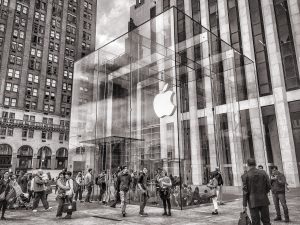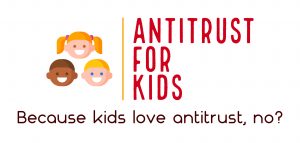Author: Ruth Glaeser
Recent news highlights a growing focus on government antitrust enforcement cases against companies accused of monopolizing markets and abusing their power. But let’s consider another question: if a company lacks sufficient market power to qualify as a monopolist, but competes with only one or a handful of other companies, how does that affect consumer welfare?
American antitrust law seems to champion consumer choice untainted by anticompetitive practices. But it does not prohibit the market dynamic known as an oligopoly, which is a structure prevalent in numerous industries across the United States and the world. In an oligopoly, a small number of firms effectively control the quality, pricing, and supply of a particular market. This departure from perfect competition typically leads to some combination of higher prices and lower quality, and possibly less innovation and fewer consumer choices.
Consider the air-travel industry, where major players like Delta, American Airlines, United, and Southwest hold substantial influence over consumers. Similarly, when purchasing technology devices, most consumers find themselves choosing among a limited array of manufacturers, such as Apple, Samsung, and others. While no single entity monopolizes the market, collectively these firms exert significant control, raising concerns about the implications for consumer choice and pricing.
As the landscape of market power continues to evolve, understanding the dynamics of oligopolies becomes increasingly crucial for consumer welfare.
What is an Oligopoly?
An oligopoly is a market structure characterized by a small number of firms, usually fewer than five, that collectively account for a substantial share of the market. These firms are generally interdependent and the decisions of one firm often directly influence the behavior and profitability of the others. Their interdependence can lead to anticompetitive behaviors, including aggressive pricing to tacit collusion. These practices may harm competition and consumers.
One of the largest threats to competition from oligopolistic behavior is conscious parallelism. Conscious parallelism occurs when firms in a competitive market make aligned decisions without direct communication or collusion. Instead, each firm observes the actions of its competitors, and reacts accordingly, often leading to similar pricing strategies, product offerings, or marketing tactics. Sometimes, there is one company, often the largest, that will start the merry-go-round, and smaller companies will follow the leader. Importantly, conscious parallelism is not itself illegal under the antitrust laws, but its effects can mimic the anticompetitive results of monopolies.
There are several ways in which a market can become an oligopoly. The most common are high barriers to entering a market and the need for economies of scale. Many industries, such as the airline industry, require significant financial investment, which can deter new entrants. Relatedly, established firms often benefit from economies of scale, which allow them to produce at lower costs than new entrants, making it hard for smaller firms to compete on price. Sometimes companies may merge or acquire competitors to facilitate this, which reduces market competitors and increases a firm’s market share.
Moreover, it is common for government regulations to create or sustain oligopolies, such as in the utility industry, where governments may grant exclusive rights to certain firms to operate in specific regions, limiting competition, and controlling pricing. And government regulation itself tends to increase economies of scale, which tends to move markets from competitive toward oligopolistic. Indeed, if the federal government truly cared about increasing competition, it would take a long-hard look at excessive, unnecessary regulations that increase market-entry barriers.
Risk of Anticompetitive Behavior
An oligopoly presents a risk for several types of anticompetitive behavior:
-
High Potential for Price Fixing
Price fixing occurs when a small number of firms in the oligopoly agree to set prices at a certain level, rather than allowing competition to determine them. A notable example is the case of In re Domestic Drywall Antitrust Litigation, which involved seven defendant drywall manufacturers, four of which were responsible for approximately 70% of the market share. Plaintiffs alleged that these drywall manufacturers engaged in collusion to raise prices by 35%, announcing the increase to customers well in advance. This move came at a time when the industry was facing a surplus of product alongside a decline in demand. While the case was settled before reaching trial, the court’s findings suggested that the price hike was free from illegal collusion among Defendants.
-
High Potential for Conscious Parallelism
Conscious Parallelism poses a significant challenge to competition. This phenomenon occurs when firms coordinate their behavior without any explicit communication or agreement, often leading to artificially inflated prices. A prime example is Holiday Wholesale Grocery Co. v. Phillip Morris Inc, where Phillip Morris, a dominant player in the cigarette market, announced a substantial price reduction on its premium products. Its three main competitors quickly followed suit, controlling approximately 95% of the market.
 The Antitrust Attorney Blog
The Antitrust Attorney Blog










